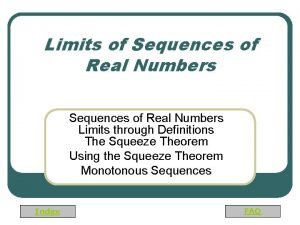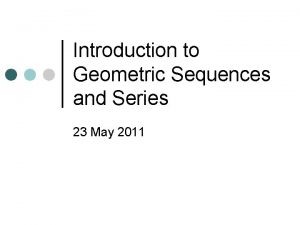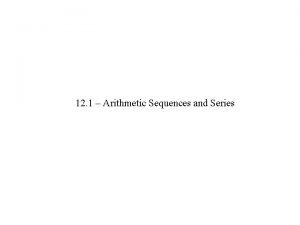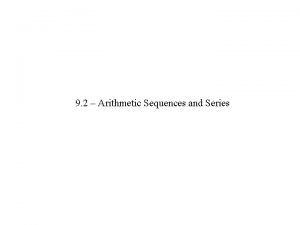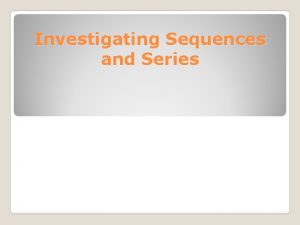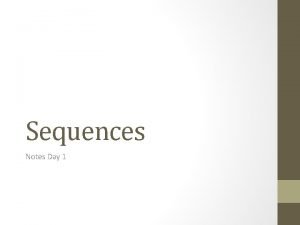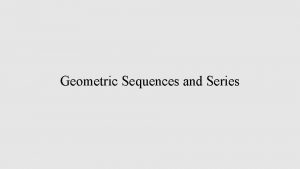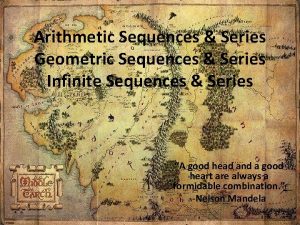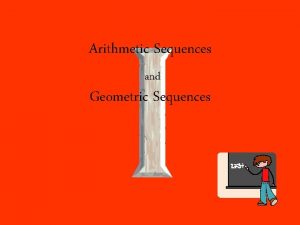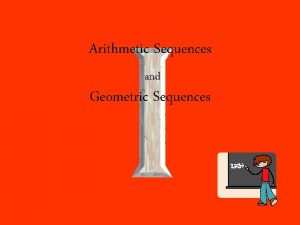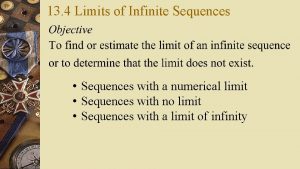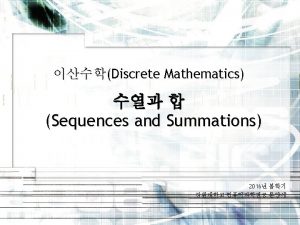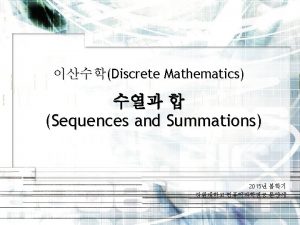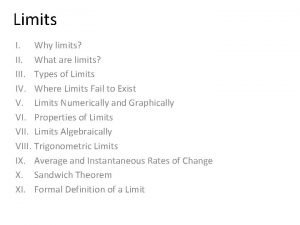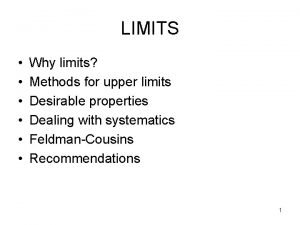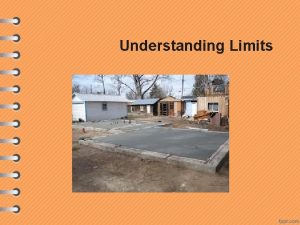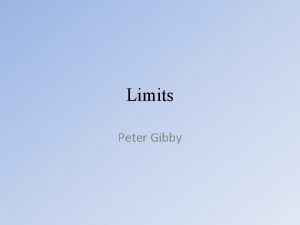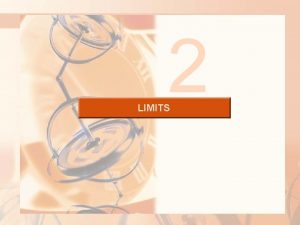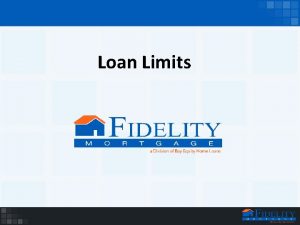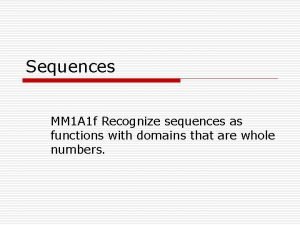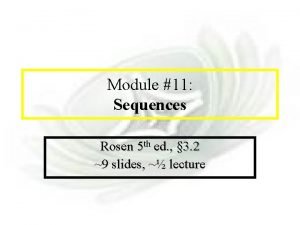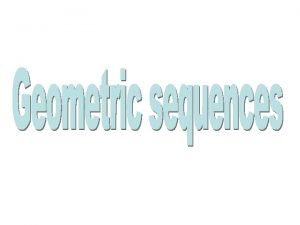LIMITS LIMITS INTRODUCTION LIMITS v Consider the sequences

















![LIMITS Note If x R then [x] = the integral part of x. Lt LIMITS Note If x R then [x] = the integral part of x. Lt](https://slidetodoc.com/presentation_image_h2/1bee13c371e1ad554ad3ce6189150a7f/image-18.jpg)

![LIMITS 3) (a, b] = {x R, a<x b} is called left open right LIMITS 3) (a, b] = {x R, a<x b} is called left open right](https://slidetodoc.com/presentation_image_h2/1bee13c371e1ad554ad3ce6189150a7f/image-20.jpg)










- Slides: 30

LIMITS

LIMITS INTRODUCTION

LIMITS v Consider the sequences of values 1. 9, 1. 999, … and 2. 1, 2. 001, … given to a variable x. v The values of x in the first sequence are all less than 2 and approaching 2. In this case we say that x tends to 2 from left and it is denoted by x� 2 -.

LIMITS v The values of x in the second sequence are all greater than 2 and approaching 2. In this case we say that x tends to 2 from right and it is denoted by x� 2+. v If x tends to 2 either from left or from right then we say x tends to 2 and it is denoted by x� 2.

LIMITS To understand the limit concept, the function below is very much useful: y=2 = x+2 O X 1. 9998 1. 999999 2. 0001 2. 000001 f(x) 3. 9998 3. 999999 4. 0001 4. 000001 x=2

LIMITS From the graph we can easily observe that when x approaches to 2 from the left or right, f(x) approaches to 4 When x→ 2, f(x) → 4 or Lt f(x) = 4 x 2 In this the left approach is called left hand limit L. H. L = Lt - f(x) = 4 x 2

LIMITS The right approach is called right hand limit Lt f(x) = 4 R. H. L = x 2 +

LIMITS RIGHT AND LEFT HAND LIMITS We studied the limit of a function f at a given point x=a as the approaching value of f(x) when x tends to ‘a’. Here we note that there are two ways x could approach ‘a’, either from the left of ‘a’ or from the right of ‘a’. This naturally leads to two limits, namely ‘the right hand limit’ and ‘the left hand limit’.

LIMITS

LIMITS Solution We observe that the limit of f at 0 which is defined by the values of f(x) when x<0 is equal to 1 i. e. , the left hand limit of f(x) at ‘ 0’ is Lt f(x) = 1 - x 0

LIMITS Similarly, the limit of f at 0 which is defined by the values of f(x) when x>0 is equal to 1 i. e. , the right hand limit of f(x) at ‘ 0’ is Lt f(x) = 1 + y 2 f(x) = 1, x 0 X' -2 O x, x>0 + 1 = ) f(x 2 y' x 0 Here, we note that the right and left hand limits of f at 0 exist and are equal to 1 and in this case the limit of f(x) as x tends to 0 exists and it is 1. x

LIMITS MCQs P 1) 0 2) 1 P 2) k 3) 2 3) -k 4) 2 k 4) 3

LIMITS 1) 0 2) k 3) l P 4) Does not exist

LIMITS SOME IMPORTANT DEFINITIONS

LIMITS y Solution (0, 1) x' O x (0, -1) From figure, we observe that Lt f(x) = 1 - y' x 0 Hence, the right and left hand limits of f at 0 are different. We observe that the limit of f(x) as x tends to 0 does not exist.

LIMITS MODULUS OF A REAL NUMBER If x R, then the absolute value or modulus of ‘x’ is denoted by |x| and is defined as follows |x| = x, if x 0 = -x, if x<0

LIMITS STEP FUNCTION The function f: R R defined as f(x) = n where n Z such that n x<n+1, x R is called step function It is denoted by f(x) = [x]
![LIMITS Note If x R then x the integral part of x Lt LIMITS Note If x R then [x] = the integral part of x. Lt](https://slidetodoc.com/presentation_image_h2/1bee13c371e1ad554ad3ce6189150a7f/image-18.jpg)
LIMITS Note If x R then [x] = the integral part of x. Lt + [x] = a and x a Lt x a-

LIMITS INTERVALS A subset A of R is said to be an interval if a, b A and x R, a<x<b x A. Let a, b R and a<b. Then 1) (a, b) = {x R, a<x<b} is called open interval 2) [a, b] = {x R, a x b} is called closed interval
![LIMITS 3 a b x R ax b is called left open right LIMITS 3) (a, b] = {x R, a<x b} is called left open right](https://slidetodoc.com/presentation_image_h2/1bee13c371e1ad554ad3ce6189150a7f/image-20.jpg)
LIMITS 3) (a, b] = {x R, a<x b} is called left open right closed interval 4) [a, b) = {x R, a x<b} is called left closed right open interval 5) (a, ) = {x R: x>a} 6) [a, ) = {x R: x a} 7) (- , a) = {x R : x<a} 8) (- , a] = {x R : x a} 9) (- , ) = R

LIMITS v Let a, R. >0, then (a- , a+ ) is called a neighbourhood of ‘a’ v Let a, R. >0, then (a- , a) (a, a+ ) is called a deleted neighbourhood of ‘a’

LIMITS Note If lim f(x) and lim f(x) exist then x a+ x a- i) Lt f(x) = Lt f(a+h) x a+ h 0 ii) Lt f(x) = Lt f(a-h) x a- x a h 0 x a

LIMITS x a x a vi) Lt x a f(x) = 0 and f is negative in a deleted x a neighbourhood of a,

LIMITS

LIMITS SANDWICH THEOREM

LIMITS PROPERTIES OF LIMITS

LIMITS INDETERMINATE FORMS In finding the values of limits, some times we obtain the following forms

LIMITS MCQs 1) 1 1) l 2 P 2) l 3) 0 3) a 4) 3 4) Does not exist

LIMITS 1) 1 P 2) 0 3) -1 4) Does not exist

LIMITS Thank you…
 Limits of sequences
Limits of sequences Limits involving infinity
Limits involving infinity Real limits vs. apparent limits
Real limits vs. apparent limits Geometric sequence
Geometric sequence 5/9
5/9 Series formula arithmetic
Series formula arithmetic 9-2 arithmetic sequences
9-2 arithmetic sequences Hình ảnh bộ gõ cơ thể búng tay
Hình ảnh bộ gõ cơ thể búng tay Bổ thể
Bổ thể Tỉ lệ cơ thể trẻ em
Tỉ lệ cơ thể trẻ em Gấu đi như thế nào
Gấu đi như thế nào Chụp phim tư thế worms-breton
Chụp phim tư thế worms-breton Chúa yêu trần thế alleluia
Chúa yêu trần thế alleluia Các môn thể thao bắt đầu bằng tiếng bóng
Các môn thể thao bắt đầu bằng tiếng bóng Thế nào là hệ số cao nhất
Thế nào là hệ số cao nhất Các châu lục và đại dương trên thế giới
Các châu lục và đại dương trên thế giới Công thức tính độ biến thiên đông lượng
Công thức tính độ biến thiên đông lượng Trời xanh đây là của chúng ta thể thơ
Trời xanh đây là của chúng ta thể thơ Mật thư tọa độ 5x5
Mật thư tọa độ 5x5 101012 bằng
101012 bằng Phản ứng thế ankan
Phản ứng thế ankan Các châu lục và đại dương trên thế giới
Các châu lục và đại dương trên thế giới Thơ thất ngôn tứ tuyệt đường luật
Thơ thất ngôn tứ tuyệt đường luật Quá trình desamine hóa có thể tạo ra
Quá trình desamine hóa có thể tạo ra Một số thể thơ truyền thống
Một số thể thơ truyền thống Cái miệng xinh xinh thế chỉ nói điều hay thôi
Cái miệng xinh xinh thế chỉ nói điều hay thôi Vẽ hình chiếu vuông góc của vật thể sau
Vẽ hình chiếu vuông góc của vật thể sau Biện pháp chống mỏi cơ
Biện pháp chống mỏi cơ đặc điểm cơ thể của người tối cổ
đặc điểm cơ thể của người tối cổ Thế nào là giọng cùng tên? *
Thế nào là giọng cùng tên? *
